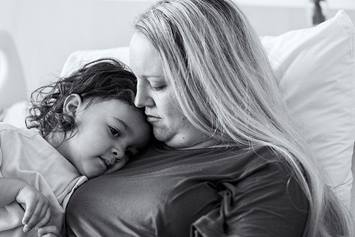Surgical Repair
For a child with imperforate anus /anorectal malformation, Hirschsprung Disease, cloacal malformation or any other condition that prevents the body from safely eliminating stool, the immediate goal of surgery is to provide a way for the body to pass waste safely and reduce the risk of infection.
In some cases, a single reconstructive surgery can help restore a way for the body to pass waste; however, most complex malformations often times will require a series of surgeries, performed over several months or years, to help normalize bowel function. Depending on the severity of the condition, surgeries can be done within the first few days or weeks of a baby’s life, or can be delayed for several months if necessary.
Most of the procedures at the Center for Colorectal and Pelvic Reconstruction are done using laparoscopic or “minimally invasive” surgery. With this technique, surgeons don’t have to make large cuts in the body. Instead, the surgeon will make a few tiny cuts in the abdomen, and use specialized cameras and tools to conduct the surgery. Laparoscopy can help reduce pain, healing time and the risk of infection. It is the preferred method of surgery for repairing anorectal malformations and Hirschsprung disease.
Here are a few of the surgical procedures that our team regularly performs for the treatment of Hirschsprung disease, imperforate anus/anorectal malformation, cloacal malformation and other colorectal conditions.



